Potřebujeme váš souhlas k využití jednotlivých dat, aby se vám mimo jiné mohly ukazovat informace týkající se vašich zájmů. Souhlas udělíte kliknutím na tlačítko „OK“.
ASTM E905-87(2013)
Standard Test Method for Determining Thermal Performance of Tracking Concentrating Solar Collectors
Automaticky přeložený název:
Standardní zkušební metoda pro stanovení tepelného výkonu sledování koncentrované solární kolektory
NORMA vydána dne 1.11.2013
Informace o normě:
Označení normy: ASTM E905-87(2013)
Poznámka: NEPLATNÁ
Datum vydání normy: 1.11.2013
Kód zboží: NS-48432
Počet stran: 14
Přibližná hmotnost: 42 g (0.09 liber)
Země: Americká technická norma
Kategorie: Technické normy ASTM
Kategorie - podobné normy:
Anotace textu normy ASTM E905-87(2013) :
Keywords:
single-axis, thermal performance, tracking concentrating solar collectors, two-axis, ICS Number Code 27.160 (Solar energy engineering)
Doplňující informace
| Significance and Use | ||||||||||
|
5.1 This test method is intended to provide test data essential to the prediction of the thermal performance of a collector in a specific system application in a specific location. In addition to the collector test data, such prediction requires validated collector and system performance simulation models that are not provided by this test method. The results of this test method therefore do not by themselves constitute a rating of the collector under test. Furthermore, it is not the intent of this test method to determine collector efficiency for comparison purposes since efficiency should be determined for particular applications. 5.2 This test method relates collector thermal performance to the direct solar irradiance as measured with a pyrheliometer with an angular field of view between 5 and 6°. The preponderance of existing solar radiation data was collected with instruments of this type, and therefore is directly applicable to prediction of collector and system performance. 5.3 This test method provides experimental procedures and calculation procedures to determine the following clear sky, quasi-steady state values for the solar collector: 5.3.1 Response time, 5.3.2 Incident angle modifiers, 5.3.3 Near-normal incidence angular range, and 5.3.4 Rate of heat gain at near-normal incidence angles. 5.4 This test method may be used to
evaluate the thermal performance of either (1) a complete
system, including the tracking subsystems and the thermal
collection subsystem, or (2) the thermal
collection subsystem.
5.4.1 When this test method is used to evaluate the complete system, the test shall be performed with the manufacturer's tracker and associated controls, and thus the effects of tracking error on thermal performance will be included in the results. Linear single-axis tracking systems may be supplemented with the test laboratory's tracking equipment to effect a two-axis tracking arrangement. 5.4.2 When evaluating a thermal collection subsystem, the accuracy of the tracking equipment shall be maintained according to the restrictions in 10.3. 5.5 This test method is to be completed at a single appropriate flowrate. For collectors designed to operate at variable flowrates to achieve controlled outlet temperatures, the collector performance shall be characterized by repeating this test method in its entirety for more than one flowrate. These flowrates should be typical of the actual operating conditions of the collectors. 5.6 The response time is determined to establish the time required for quasi-steady state conditions to exist before each thermal performance test to assure valid test data, and to determine the length of time over which the quasi-steady state performance is averaged. The response time is calculated from transient temperature data resulting from step changes in intercepted solar irradiance with a given flow rate. Initial quasi-steady state conditions are established, the irradiance level is then increased or decreased suddenly, and the final quasi-steady state conditions are established. For most collectors covered by this test method, the difference in the response time determined by each of the two procedures will be small in terms of actual time. It is recognized that for some collectors, particularly those with long fluid residence times, the difference in the two values of response time may be large. However, the difference has not been found to influence the remainder of the test method. 5.7 The incident angle modifier is measured for linear single-axis tracking collectors so that the thermal performance at arbitrary angles of incidence can be predicted from the thermal performance measured at near-normal incidence as required in this test method. This is necessary because, during actual daily operation, linear single-axis tracking collectors will usually be normal to the sun only once or twice. 5.7.1 At non-zero angles of incidence, the thermal performance of a linear single-axis tracking collector may change for several reasons: 5.7.1.1 Increased or decreased reflectance, transmittance, and absorptance at the concentrator and receiver surfaces, or 5.7.1.2 Increased or decreased interception of the reflected or refracted solar radiant energy by the receiver. 5.7.1.3 That part of the decreased interception that is due to loss of collected energy at the ends of the absorber can be calculated analytically from the collector geometry as an end effects factor (see Appendix X1). 5.7.2 The preferred procedure for determining the incident angle modifier minimizes heat loss from the receiver by requiring that the working heat transfer fluid be the same as is used in the rest of the test method, and that it be maintained at an inlet temperature approximately equal to ambient temperature. It is realized, however, that this procedure may not be practical to perform as specified, since some heat transfer oils become too viscous near ambient temperatures to be pumped through the fluid test loop, or the fluid test loop cannot practicably cool the working fluid sufficiently to approximate the ambient temperatures that typically occur in the winter in cold climates. In these cases, either Alternative Procedure A or B may be used at the discretion of the manufacturer or supplier. Alternative Procedure A uses water as the working fluid at an inlet temperature approximately equal to ambient to minimize heat losses, but the procedure requires careful cleaning of the collector fluid passages, possibly use of a separate fluid test loop, and may cause corrosion if the collector fluid passages are incompatible with water. Alternative Procedure B uses the same heat transfer fluid as is used in the rest of the test method, but at an elevated temperature which is as close as practicable to ambient. Alternative Procedure B involves higher heat losses from the receiver which must be calculated and corrected for. An approximate correction for these heat losses is obtained in Alternative Procedure B by determining the nonirradiated heat loss for the same fluid inlet temperature. 5.8 Determination of the angular range of near-normal incidence is required to establish the test conditions under which the measured thermal performance will adequately represent the thermal performance at true normal incidence. 5.9 The thermal performance of the
solar collector is determined under clear sky conditions and at
near-normal incidence because these conditions are reproducible and
lead to relatively stable performance.
|
||||||||||
| 1. Scope | ||||||||||
|
1.1 This test method covers the determination of thermal performance of tracking concentrating solar collectors that heat fluids for use in thermal systems. 1.2 This test method applies to one- or two-axis tracking reflecting concentrating collectors in which the fluid enters the collector through a single inlet and leaves the collector through a single outlet, and to those collectors where a single inlet and outlet can be effectively provided, such as into parallel inlets and outlets of multiple collector modules. 1.3 This test method is intended for those collectors whose design is such that the effects of diffuse irradiance on performance is negligible and whose performance can be characterized in terms of direct irradiance. 1.4 The collector may be tested
either as a thermal collection subsystem where the effects of
tracking errors have been essentially removed from the thermal
performance, or as a system with the manufacturer-supplied tracking
mechanism.
1.4.1 The tests appear as follows:
1.5 This test method is not intended for and may not be applicable to phase-change or thermosyphon collectors, to any collector under operating conditions where phase-change occurs, to fixed mirror-tracking receiver collectors, or to central receivers. 1.6 This test method is for outdoor testing only, under clear sky, quasi-steady state conditions. 1.7 Selection and preparation of the collector (sampling method, preconditioning, mounting, alignment, etc.), calculation of efficiency, and manipulation of the data generated through use of this standard for rating purposes are beyond the scope of this test method, and are expected to be covered elsewhere. 1.8 This test method does not provide a means of determining the durability or the reliability of any collector or component. 1.9 The values stated in SI units are to be regarded as the standard. The values given in parentheses are for information only. 1.10 This standard does not purport to address all of the safety concerns, if any, associated with its use. It is the responsibility of the user of this standard to establish appropriate safety and health practices and determine the applicability of regulatory limitations prior to use. |
||||||||||
| 2. Referenced Documents | ||||||||||
|
Podobné normy:
Historická
1.4.2009
Historická
1.3.2007
Historická
1.12.2010
Historická
1.4.2009
Historická
1.12.2010
Historická
1.11.2013
Doporučujeme:
Aktualizace technických norem
Chcete mít jistotu, že používáte pouze platné technické normy?
Nabízíme Vám řešení, které Vám zajistí měsíční přehled o aktuálnosti norem, které používáte.
Chcete vědět více informací? Podívejte se na tuto stránku.


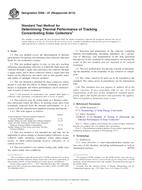
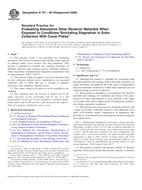 ASTM E781-86(2009)..
ASTM E781-86(2009)..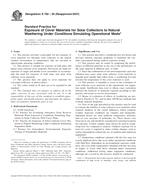 ASTM E782-95(2007)..
ASTM E782-95(2007)..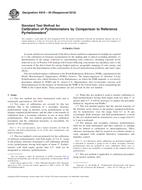 ASTM E816-05(2010)..
ASTM E816-05(2010)..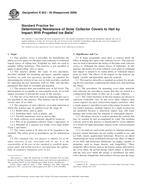 ASTM E822-92(2009)..
ASTM E822-92(2009).. ASTM E824-10
ASTM E824-10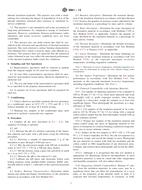 ASTM E861-13
ASTM E861-13
 Cookies
Cookies
